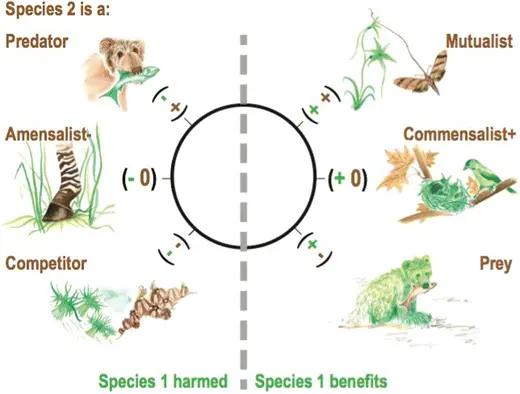
Introduction
Organisms live within an ecological community that is defined as an accumulation of populations of at least two different species that interrelate directly and indirectly within a defined geographic area. Species interaction make the basis for many ecosystem processes and properties such as food webs and nutrient cycles. The nature of these interactions can differ depending on the evolutionary framework and environmental conditions in which these interactions occur.
That is why ecological interactions between individual organisms and entire species are difficult to define and measure. However, there are various classes of interactions among organisms that are found throughout many habitats and ecosystems. Using these interaction classes as a framework when studying an ecological community lets scientists describe naturally occurring processes and helps in predicting how human modifications to the natural world may affect ecosystem properties and processes.
Ecological interactions can be defined in two ways.
Intra-specific interactions are such interactions that happen between individuals of the same species.
Inter-specific interactions are those interactions that occur between two or more species of different populations. Some of the ecological interactions that will be discussed in this blog are predation, competition, symbiosis, and herbivory. These are not the only types of species interactions but the most studied.
Competition
It is the most typically considered species interaction in which species compete for a common resource that is in limited supply, but more usually it can be defined as the direct or indirect interaction of organisms that tends to a change in fitness when the organisms share the same resource. As a result, the weaker competitors have a negative effect.
There are three major types of competition. Interference competition and exploitation competition, are characterized as real competition. A third type, apparent competition, is not. Interference competition happens right between individuals, while apparent competition and exploitation competition occur indirectly between individuals.
Interference Competition
When an individual directly regulates the resource-attaining behavior of other individuals, the interaction is called as interference competition. For example, when a male gorilla forbids other males from reaching a mate by using physical aggression, the dominant male is directly changing the mating behavior of other males. This is categorized as an intra-specific interaction.

Exploitation Competition
It occurs when individuals interact indirectly as they strive for common resources, like prey, territory, or food. Simply the use of the resource by one individual will decrease the amount of available resources for other individuals. Either by interference or exploitation interaction, a superior competitor can eliminate an inferior one from the area over time, resulting in competitive exclusion.
Species can survive together if intra-specific competition is stronger than inter-specific which means that each species will prevent its own population growth before it inhibits that of the competitor, leading to coexistence.
Another mechanism for dodging competitive exclusion is to adopt substitute life history and dispersion strategies, which are usually reinforced through natural selection. Such a mechanism reduces competitive interactions and enhances opportunities for new colonization and nutrient gain. The success of this mechanism is often dependent upon events such as flood, tide, or fire disturbances.
Apparent Competition
It occurs when two individuals do not directly compete for resources and affect each other indirectly by being prey for the same predator. For Example, a hawk preys both on squirrels and mice. In this relationship, if the population of squirrels increases, then the mouse population may be positively affected subsequently more squirrels will be available as prey for the hawks.
However, an increased squirrel population may ultimately lead to a higher population of hawks needful for more prey, thus, negatively affecting the mice population through increased predation pressure as the squirrel population decreases. The opposite effect can also occur through a decrease in food resources for the predator.
If the squirrel population decreases, it can indirectly cause a reduction in the mouse population since they will be the more plentiful food source for the hawks. Apparent competition can be difficult to identify in nature because of the complexity of indirect interactions which involve multiple species and changing environmental conditions.
Predation and Herbivory
Predation
It is a kind of species interaction which requires one individual, the predator, to kill and eat another individual called the prey. In most examples of this relationship, the predator and prey both are animals, however, protozoans are known to prey on bacteria and other protozoa, and some plants are known to trap and digest insects for example, pitcher plant.
Typically, this interaction can be inter-specific, but when it occurs intra-specific it is cannibalism. It is actually rather common in both aquatic and terrestrial food webs. It often occurs when food resources are rare, forcing organisms of the same species to feed on each other.
Astonishingly, this can actually benefit the species though not the prey as a whole by supporting the population through times of limited resources while instantaneously allowing the scarce resources to recover through reduced feeding pressure.
The predator-prey relationship can be multifaceted through sophisticated adaptations by both prey and predators, which is called an evolutionary arms race. Typical predatory adaptations are sharp claws and teeth, quick and agile bodies, stingers or poison, color camouflage, and excellent olfactory, aural, or visual acuity. Prey species have evolved a diversity of defenses including morphological, behavioral, mechanical, physiological, life-history synchrony, and chemical defenses to avoid being preyed upon.
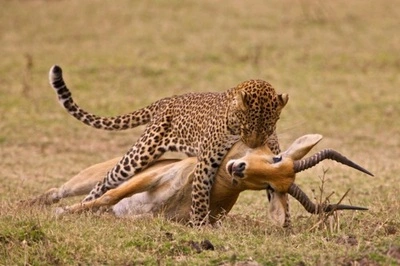
Another Species interaction that is more like predation is herbivory, which happens when an individual feeds on photosynthetic organism. An important variance between predation and herbivory is that herbivory doesn’t always lead to the death of the individual.
Herbivory
Herbivory is mainly the foundation of food webs because it involves the consumption of primary producers.
Herbivores are classified on the basis of the part of the plant consumed. Granivores feed on seeds; grazers eat low shrubs and grasses; browsers eat leaves of shrubs or trees; and frugivores eat fruits. Tolerance is the ability of the plant to minimize negative effects resulting from herbivory, while resistance means plants use different defenses to avoid being consumed.
Physical defenses (for example, tough material, thorns, sticky substances) and chemical adaptations for example, bad-tasting chemicals in leaves, and irritating toxins on piercing structures are two common examples of plant defenses.
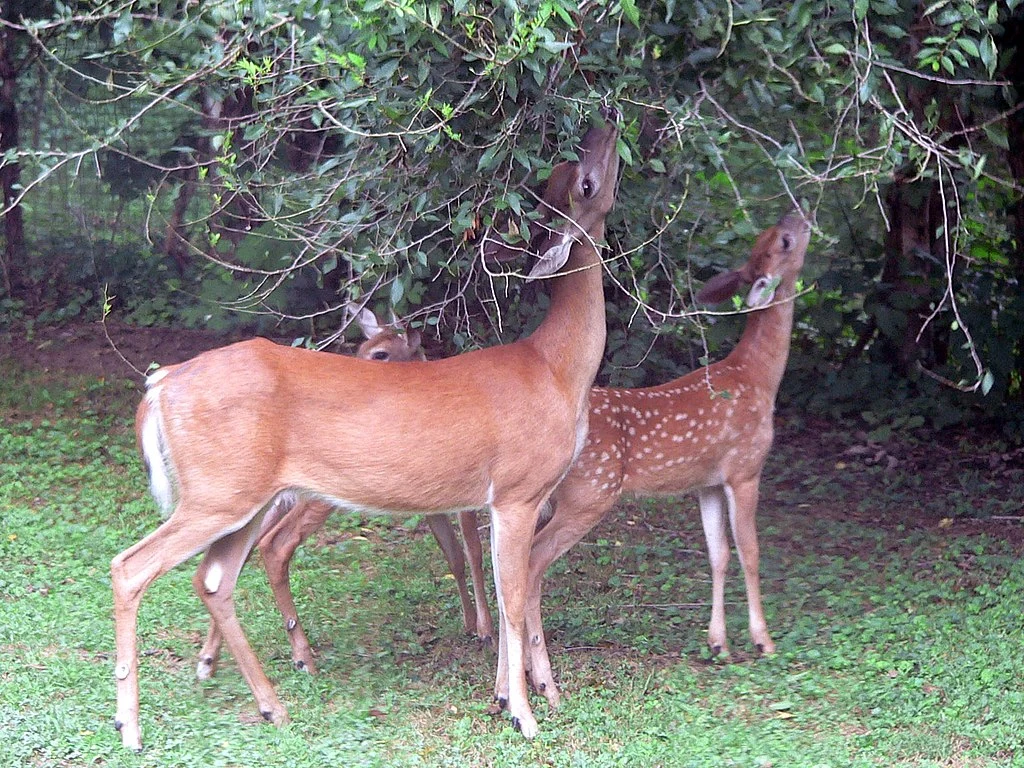
Symbiosis: Mutualism, Commensalism, Parasitism
It occurs when there is a very close ecological interrelation between species. There are three main types of symbiosis that are mutualism, commensalism, and parasitism.
Mutualism
It can be considered as a species interaction that can be obligate or facultative. It is known that sometimes the term symbiosis is used exactly to mean mutualism. Species which are having obligate mutualism cannot survive without the relationship. Facultative mutualistic species can survive individually when separated but regularly not as well.
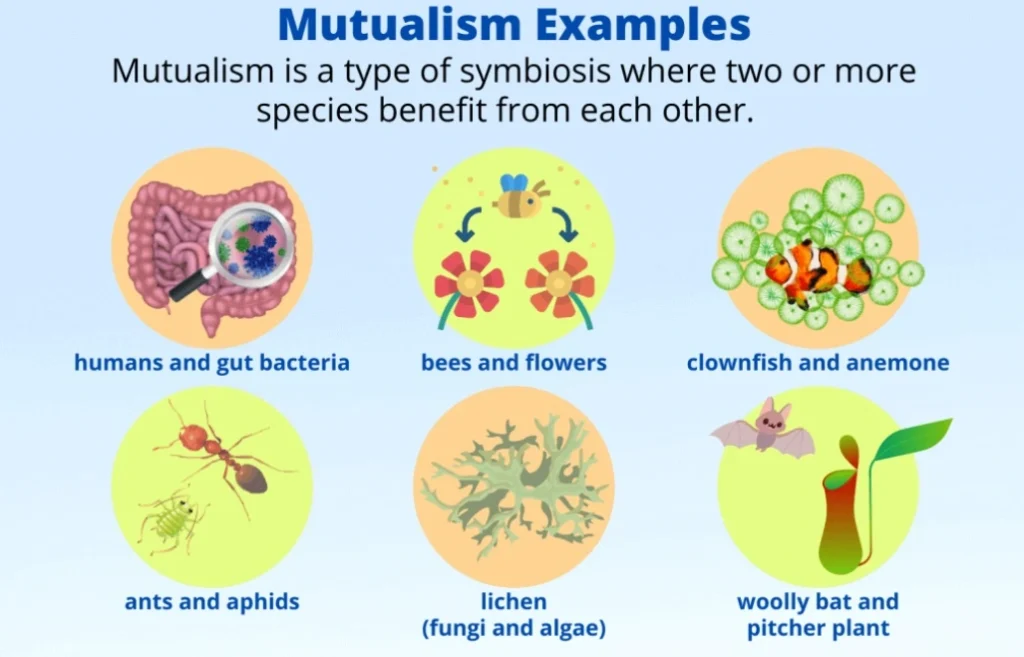
For example, certain fungi and leafcutter ants have an obligate mutualistic relationship. The larvae eat only one kind of fungi, and the fungi cannot survive without the continuous care of the ants. They provide fungi with digested leaf material. They can also sense if a leaf species is harmful to the fungi, and keep it free from pests.
A good example of a facultative mutualism is found between plant roots and mycorrhizal fungi. It has been recommended that 80% of vascular plants form relationships with mycorrhizal fungi. Yet the relationship can turn into parasitic when the environment of the fungi is rich in nutrient because the plants no longer provides a benefit. Thus, the nature of the interactions between two species is mainly relative to the abiotic conditions and not always easily identified in nature.
There are 3 types of interactions in an ecosystem that fall under the interaction of symbiosis. These types of interactions occur when two species are in close relationship to each other.
Commensalism
It is a type of symbiosis where one organism gets benefits and the other organism gets nothing. For example, barnacles attached to the bodies of whales. The barnacle gets a free ride, but in return the whale gets nothing. Thus, this is the best example of commensalism.
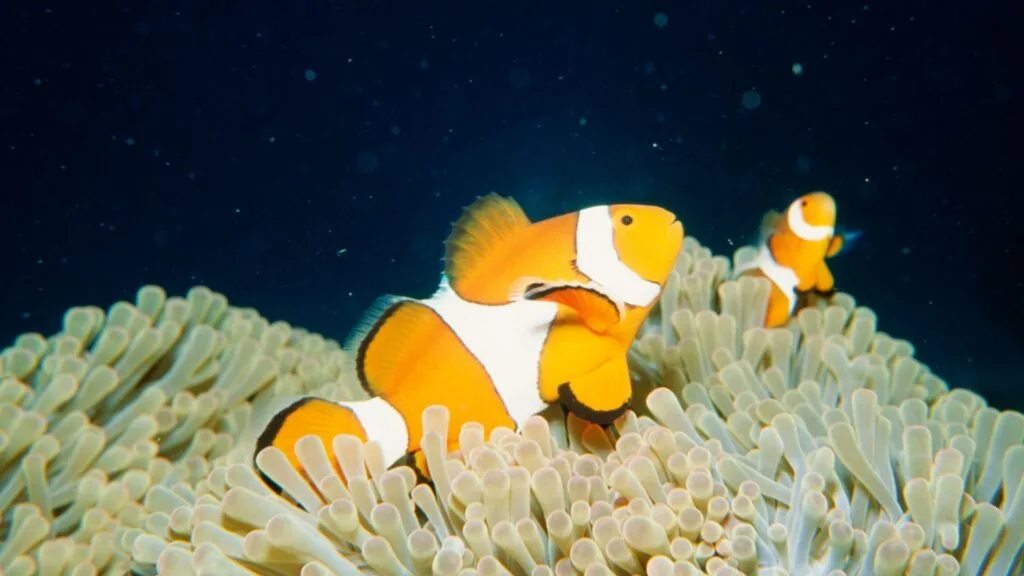
Parasitism
Parasitism is when one organism gets benefits and the other is harmed. It is different from predation. Although one organism might be getting food from the organism but consumes the organism completely. A good example of parasitism is mosquitos and humans. Mosquitos suck the blood of humans as food and the human is wounded by getting bitten.
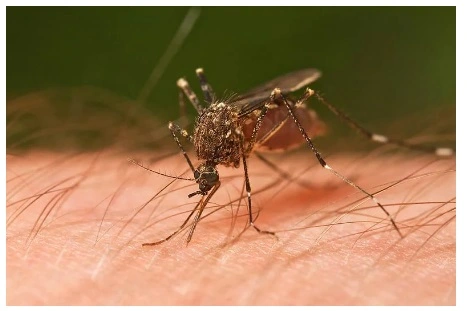
Interaction between Living and Nonliving Things in an Ecosystem
Organisms not only interact with each other but also interact with their environment. The environment is crucial for maintaining balance in the ecosystem and is an important source of nutrients for biotic factors. Detrivores scavengers, and decomposers all play a significant role in recycling nutrients in an ecosystem.
These organisms depend on dead or decaying matter and help in recycling nutrients. They sending energy back into the soil for utilization by plants and other organisms. This returns the energy back into the food web and permits sustained growth in the ecosystem.
A chapter on species interaction in the following link: https://openbooks.lib.msu.edu/isb202/chapter/species-interactions/
 The Climent Respect your roots, Protect your planet
The Climent Respect your roots, Protect your planet
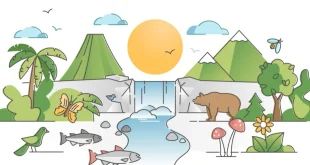
One comment
Pingback: An Overview on Geographical Classification of Species - The Climent